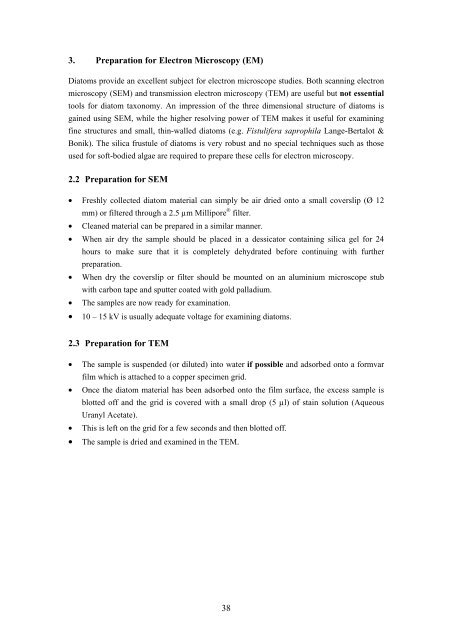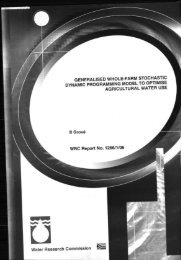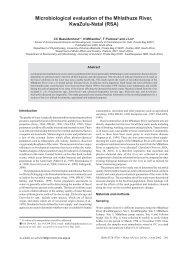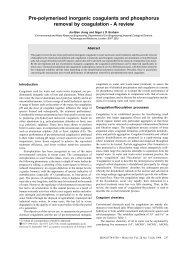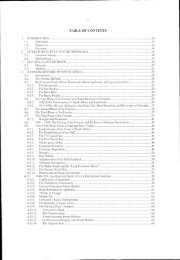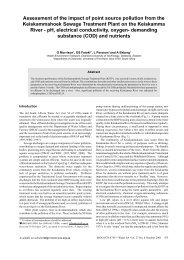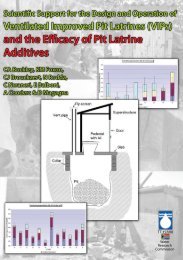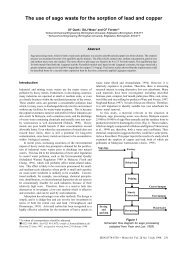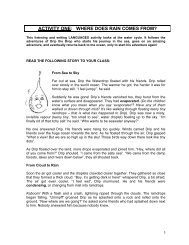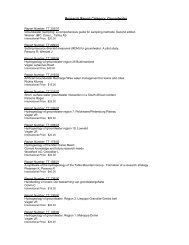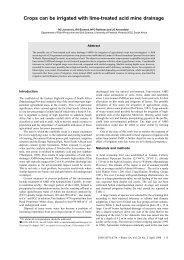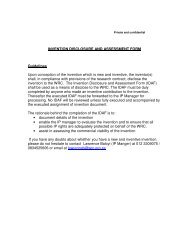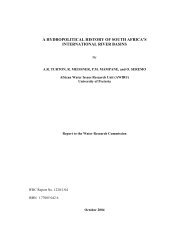A Methods Manual for the Collection, Preparation and Analysis of ...
A Methods Manual for the Collection, Preparation and Analysis of ...
A Methods Manual for the Collection, Preparation and Analysis of ...
Create successful ePaper yourself
Turn your PDF publications into a flip-book with our unique Google optimized e-Paper software.
3. <strong>Preparation</strong> <strong>for</strong> Electron Microscopy (EM)Diatoms provide an excellent subject <strong>for</strong> electron microscope studies. Both scanning electronmicroscopy (SEM) <strong>and</strong> transmission electron microscopy (TEM) are useful but not essentialtools <strong>for</strong> diatom taxonomy. An impression <strong>of</strong> <strong>the</strong> three dimensional structure <strong>of</strong> diatoms isgained using SEM, while <strong>the</strong> higher resolving power <strong>of</strong> TEM makes it useful <strong>for</strong> examiningfine structures <strong>and</strong> small, thin-walled diatoms (e.g. Fistulifera saprophila Lange-Bertalot &Bonik). The silica frustule <strong>of</strong> diatoms is very robust <strong>and</strong> no special techniques such as thoseused <strong>for</strong> s<strong>of</strong>t-bodied algae are required to prepare <strong>the</strong>se cells <strong>for</strong> electron microscopy.2.2 <strong>Preparation</strong> <strong>for</strong> SEM Freshly collected diatom material can simply be air dried onto a small coverslip (Ø 12mm) or filtered through a 2.5 µm Millipore ® filter. Cleaned material can be prepared in a similar manner. When air dry <strong>the</strong> sample should be placed in a dessicator containing silica gel <strong>for</strong> 24hours to make sure that it is completely dehydrated be<strong>for</strong>e continuing with fur<strong>the</strong>rpreparation. When dry <strong>the</strong> coverslip or filter should be mounted on an aluminium microscope stubwith carbon tape <strong>and</strong> sputter coated with gold palladium. The samples are now ready <strong>for</strong> examination. 10 – 15 kV is usually adequate voltage <strong>for</strong> examining diatoms.2.3 <strong>Preparation</strong> <strong>for</strong> TEMThe sample is suspended (or diluted) into water if possible <strong>and</strong> adsorbed onto a <strong>for</strong>mvarfilm which is attached to a copper specimen grid.Once <strong>the</strong> diatom material has been adsorbed onto <strong>the</strong> film surface, <strong>the</strong> excess sample isblotted <strong>of</strong>f <strong>and</strong> <strong>the</strong> grid is covered with a small drop (5 µl) <strong>of</strong> stain solution (AqueousUranyl Acetate).This is left on <strong>the</strong> grid <strong>for</strong> a few seconds <strong>and</strong> <strong>the</strong>n blotted <strong>of</strong>f.The sample is dried <strong>and</strong> examined in <strong>the</strong> TEM.38


